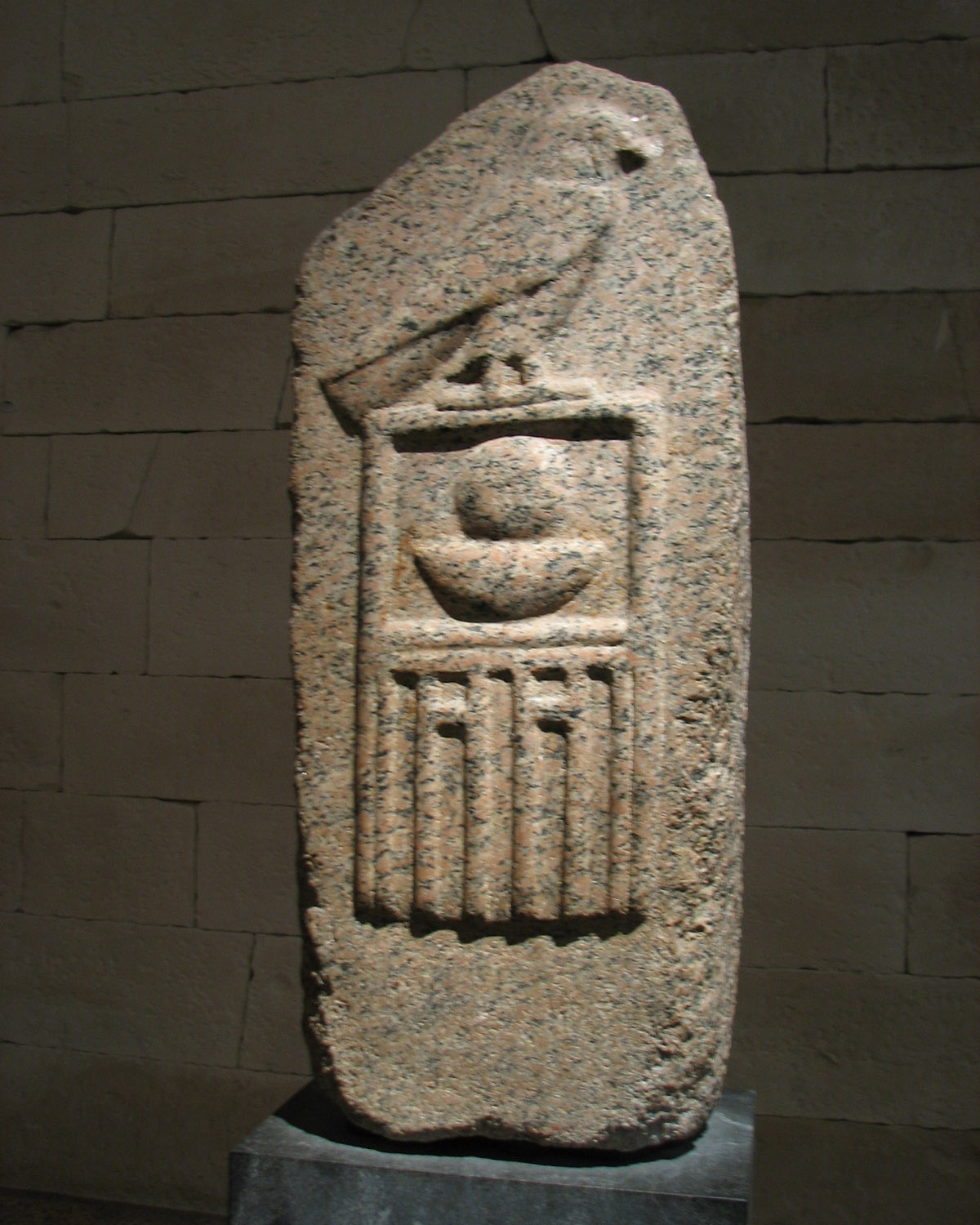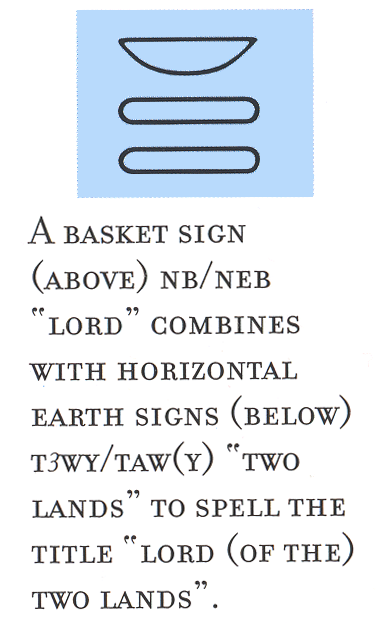
Stela of Raneb
Egyptian, Dynasty 2, ca. 2880 BCE
Granite, said to be from Mit Rahina, ancient Memphis
Purchase, Joseph Pulitzer Bequest, 1960 (MMA 60.144) and Purchase Lila Acheson
Wallace Gift, 1975 (1975, 149)

Stela of Raneb
Egyptian, Dynasty 2, ca. 2880 BCE
Granite, said to be from Mit Rahina, ancient Memphis
Purchase, Joseph Pulitzer Bequest, 1960 (MMA 60.144) and Purchase Lila Acheson
Wallace Gift, 1975 (1975, 149)
|
(From info card) "This stela of Raneb, second king of Dynasty 2, probably comes from his tomb at Saqqara. It is the earliest surviving example of relief-carving in granite. The relief shows the two elements of the king's Horus name, Raneb, carved within the serekh or palace façade, which is surmounted by the god Horus as a falcon..." Raneb's name has been translated "Ra is lord' (Routledge's _Dictionary of Egyptian Gods and Goddesses_,by George Hart, page 133). But I think the name has more subtlety than that. 'Neb' is translated 'Lord'. In the book _Decoding Egyptian Hieroglyphs_ (page 55) by Bridget McDermott and Joann Fletcher we see 'Lord of the Two Lands' explained:
 "A basket sign (above) nb/neb 'lord' combines with horizontal earth signs (below) t3wy/taw(y) 'two lands' to spell the title 'lord (of the) two lands'.
TeVelde in _Seth, God of Confusion_ explains the meaning of a later 2nd dynasty kings name, Khasekhemui:  (Source, Budge's two volume dictionary) (the two lords who are in him, are reconciled.) "The Horus name of a successor of Peribsen is Khasekhem (the power has appeared). It has been suggested that Khasekhem is identical with Khasekhemui (the two powers have appeared). If that is indeed the case, 2) then we should have a development reminiscent of Sekhemib taking the Seth name Peribsen. Over the serekh in which Khasekhemui is written, however, the Seth-animal does not appear alone, but in company with the Horus falcon. The name Khasekhemui is sometimes supplemented htp nbwy imyw.f (the two lords who are in him, are reconciled). Thus both Peribsen's Seth name and Khasekhemui's Horus-Seth name proclaim the reconciliation of Horus and Seth." (page 73) And furthermore, it is a common idea that the king possesses within himself the powers of the gods, 'the two lords who are within him'. Wilkinson speaks of the "dual nature of the living king - human and divine..." "Beginning with Siegfried Morenz, a number of scholars have shown that the dual nature of the king may also be seen in contrasting nesut with another Egyptian word relating to kingship - hem, usually translated 'majesty'. The first word, nesut, refers to the divine power held by the king and used in the exercise of kingly roles, whereas the second word, hem, really refers to the idea of the individual in whom the divine power in incarnate." (page 56, _The Complete Gods and Goddesses of Ancient Egypt_, by Richard H. Wilkinson, page 56.
|


